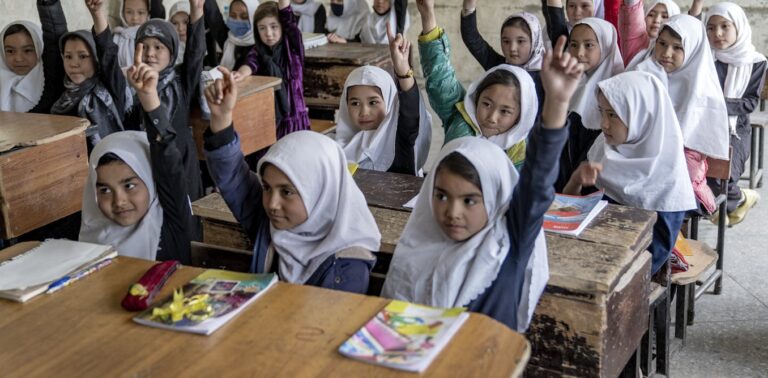After the Taliban was ousted from power in Afghanistan in 2001, women were once again allowed to attend school, having been banned since 1996. Together with World Bank education expert Raja Bentawet Kattan and American University economist Rafiuddin Najam, I analyzed the economic benefits of this. Social change using data from the 2007 Labor Force Survey and Household Survey in Afghanistan, 2014 and 2020. It turned out to be a huge deal.
After the fall of the Taliban, educational opportunities expanded at all levels. Infant mortality rates have been cut in half, and gross national income per capita has nearly tripled (in real purchasing power terms, from US$810 in 2001 to US$2,590 in 2020).
Much of the country’s economic development during this period can be attributed to women. Although the average return on investment in education overall in Afghanistan remains low, it is high for women. For example, for every additional year of schooling women received, their earnings increased by 13%. This is higher than the global average return on investment in education of 9%.
why is it important
Twenty years after the first ban on girls’ education ended, the Taliban returned to power in 2021, once again banning girls and women from attending school beyond the sixth grade.
The economic costs could potentially reach more than $1 billion, but this does not include the broader social costs associated with women’s lower levels of education. For context, Afghanistan’s gross domestic product was just $17 billion in 2023.
Our research shows how the latest education ban could have devastating effects, not just for women but for the country as a whole.
how we worked
In Afghanistan, research on the economic return to schooling, especially for women, is limited. But this evidence is critical to understanding the economic costs countries face when women are denied education and work opportunities.
Our study sought to fill this gap by quantifying how income changed in response to an additional year of schooling. We looked at what happened between 2004 and 2020, when the government expanded compulsory education for both boys and girls from the sixth grade of elementary school to the third grade of junior high school.
Our findings suggest that the costs of excluding women from education and work are significantly higher than previously estimated. According to our research, Afghanistan risks losing more than $1.4 billion annually. This corresponds to a 2% decrease in national income.
what’s next
A widely held belief among researchers is that investing in women’s education has an impact that goes beyond the individual woman. It brings economic and social benefits that last for generations. This includes increasing children’s school attendance and improving their health.
In addition to the economic benefits, further research could also examine the social benefits of women’s education in Afghanistan from 2001 to 2021. Future research will help improve the population by assessing whether investing in women’s education breaks intergenerational chains of poverty, improves public health, reduces inequality, and has multiplier effects across communities. There is a possibility of investigating a return to schooling.
With each successive ban on girls’ education, generations are further delayed, losses are compounded, and the dreams of millions of children and businesswomen are further pushed out of reach.
Research Briefs are short summaries of interesting academic research.


